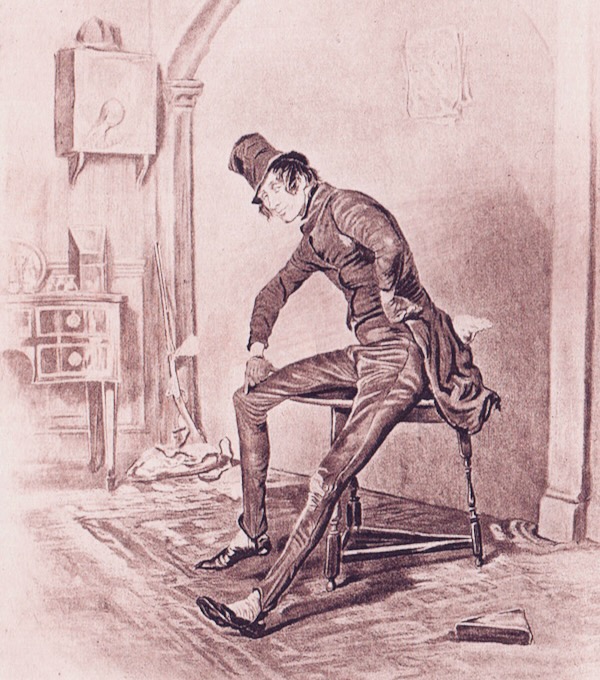
Laren Stover’s “Bohemian Manifesto” is not a manifesto at all. It does not hail the wave-like crash of a mighty new movement against the rocky shore of bourgeois indifference. It does not strive to steer the course of cultural production. It posits no statement of unified aesthetic theory, nor does it declare any sweeping political principle. Artaud’s “The Theatre of Cruelty” it is not.
Rather, the “Bohemian Manifesto,” as its subtitle title suggests, is “A guidebook to living on the edge,” and belongs to that class of publications ostensibly designed to instruct the reader in the fine art of becoming a social stereotype. Beginning with “Real Man Don’t Eat Quiche” and descending down to “The Metrosexual Guide to Style,” these primers usually adorn a bookstore’s checkout counter until they find their way onto your coffee table, then to your end table, then the tank of your WC and, at last, into the pile of unshelved volumes next to your desk in the den.
Stover’s “Manifesto” is a sort of Emily Post for the aspiring demimondaine, a kind of Dale Carnegie for the would-be beat poet. The author leaves out almost nothing. In fact, you would practically have to be a CEO in order to afford all the hipster gimcracks you’ll need to succeed in Stover’s non-Starbucks cafe society.
Stover opens her “Manifesto” by defining the qualities she thinks make the Bohemian what he is: courage, audacity, and revolt. How she could have left “dirty” out of this list is a mystery. She then goes on to define the “Bohemian Breakdown:” the Nouveau Bohemian, the Gypsy Bohemian, the Beat Bohemian, the Zen Bohemian and, at last, the Dandy Bohemian. In layman’s terms, the first four break down respectively to: patronizing wannabes, hippies, beatniks and ravers. Not surprisingly, Stover has the most difficult time with the dandy.
Dandyism.net readers may cringe at Stover’s opening line, “A little seedy, a little haughty, slightly shredded or threadbare, Dandies are the most polished of all bohemians even when their clothes are tattered.”
Haughty, threadbare and tattered are hard words. But “seedy?” That’s practically a declaration of war. But she also says, “The Dandy laments that the values of honor, elegance, and dignity have fallen by the wayside along with starched collars and/or ruffled cuffs,” which is true enough for the most part, with the possible exception of the lazily phrased last bit.
In some parts, Stover reminds me of myself back in my salad days in San Francisco. When she speaks of her boho dandy’s preference for engraved calling cards, vintage clothing, unpopular liqueurs, and abhorrence of frugality — part Oscar Wilde, part Addams Family, a little Scarlet Pimpernel — she holds up a mirror to my youthful self.
Yet there’s something not quite right with Stover’s dandy. Like many writers who have taken on the subject, she tends to conflate the dandy, the aesthete and the neo-Victorian. While a dandy can certainly be an aesthete and an aesthete a dandy, Stover assumes that that the dandy is always this eccentric retro character, the sort of terminally overdressed, blossom-waving, gender-bending Dracula impersonator in a pirate shirt that people chuckle about at the supermarket. That’s not dandyism, that’s schtick.
What I remember most about my own days in bohemia is my almost desperate desire to leave it behind. And this is another point where I feel Stover lets the dandy down. She sees the dandy as permanent resident of that 5th-floor Greenish Village walkup, a permanent rebel without applause. What she leaves out is that bohemians, whether dandies or not, are people on a mission. Whether they’re painting, composing, or writing a novel that explores aesthetic experience more elegantly than any before it, bohemians are always passing through bohemia, breathing its seductive air while mining it for stories. Otherwise, they’re nothing more than slackers.
No, the dandy always moves on, always grows, becoming ever more refined, ever more streamlined. He’s like the fencing student who starts out by swinging his epee about in great flourishing arcs, but who over time finds his economy and trades his roundhouse slashes for a simple step forward, a step back, and a lightning flick of the blade.
Books like Stover’s allow readers to explore a cultural type without having to slog through all those dreary first sources. That’s not necessarily a bad thing. They whet the appetite for more. But in the case of the dandy, readers would be better off with Barbey d’Aurevilly’s “Du Dandysme” or Ellen Moers’ definitive history, “The Dandy,” as their primer. — MICHAEL MATTIS
